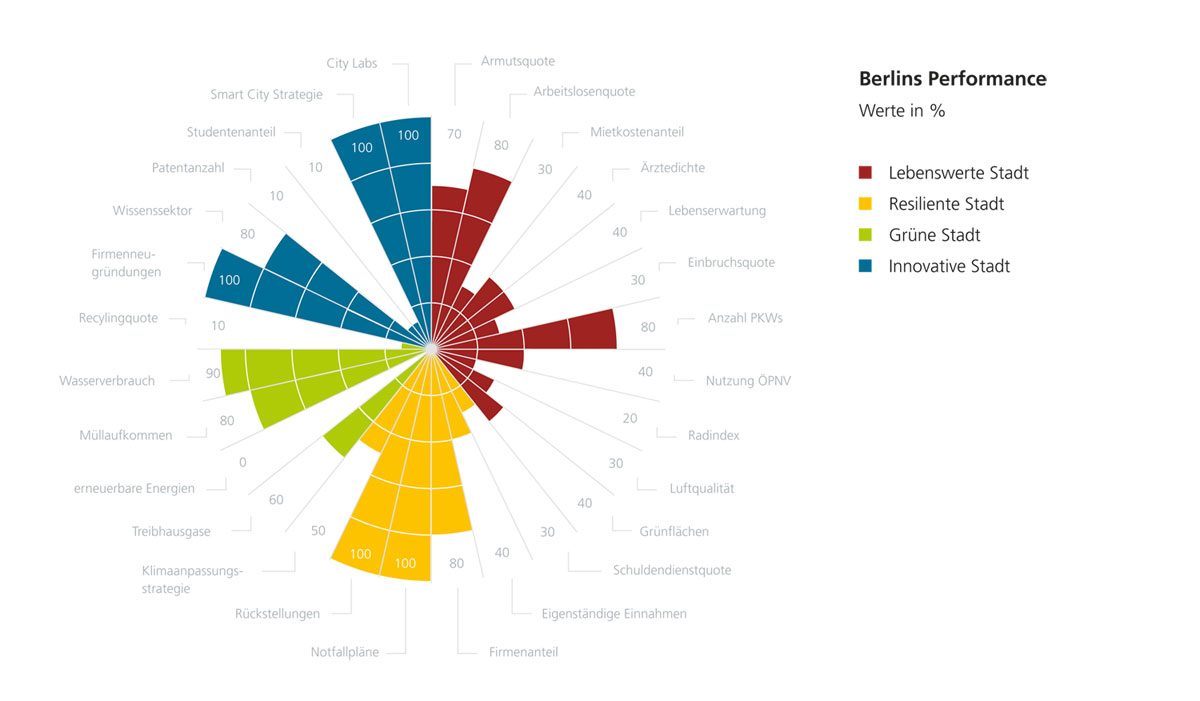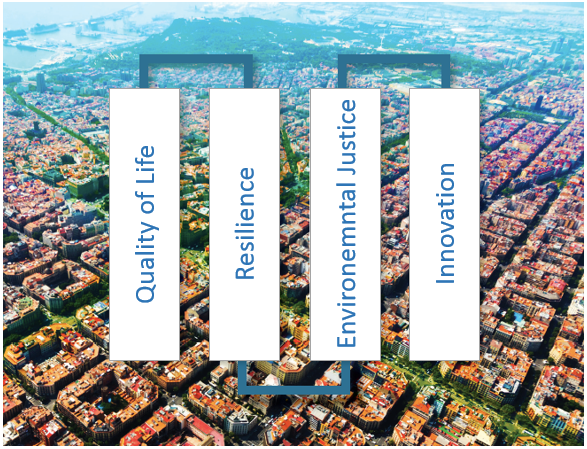Holistic governance of a city
Cities contain many constantly transforming areas, thus city managers have to deal constantly with balancing and reassessing shifting priorities. Combined with short term political cycles, this complexity leads to a tendency of focussing on short-term objectives, often neglecting important responsibilities that are imperative for maintaining or improving the city’s position in the long term perspective. Within the innovation network, the partners expressed early interest in an instrument to assist mayors, city councils and departments heads in fascilitating holistic long-term strategic management of a city.
An interdisciplinary research team from the Fraunhofer Society identified 28 indicators that were categorized into four central themes (quality of life, environmental consciousness, innovation and resilience) in order to measure the future viability of a city. Through the graphic visualization of the results, the Morgenstadt City-Index offers a snapshot of a city and a guide for city managers to help balance priorities across these four important areas.
Challenges for swarm cities
Researchers selected a range of German “swarm” cities as an initial basis of investigation. “Swarm” cities can be defined as those experiencing an increase in population, especially of students and young professionals. A city is considered a “swarm” city if the age group "20 to 34" increased their share of the population in the years 2008 to 2013 (considering many regions have suffered significant migration of this group during this period).


